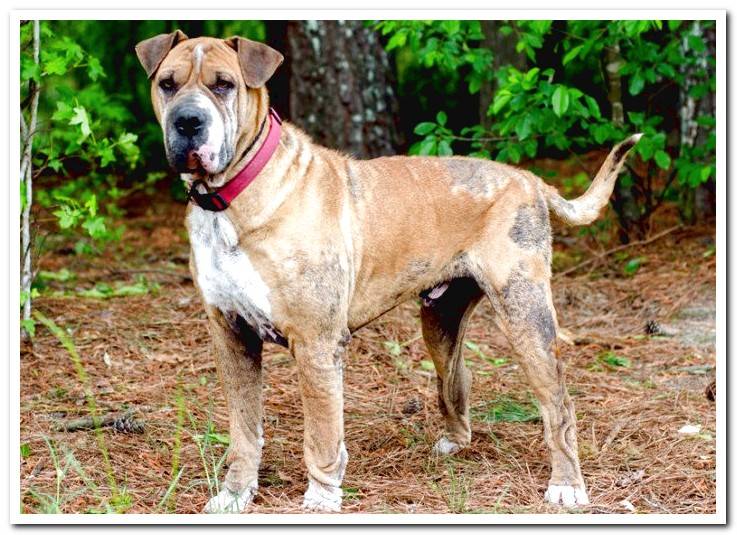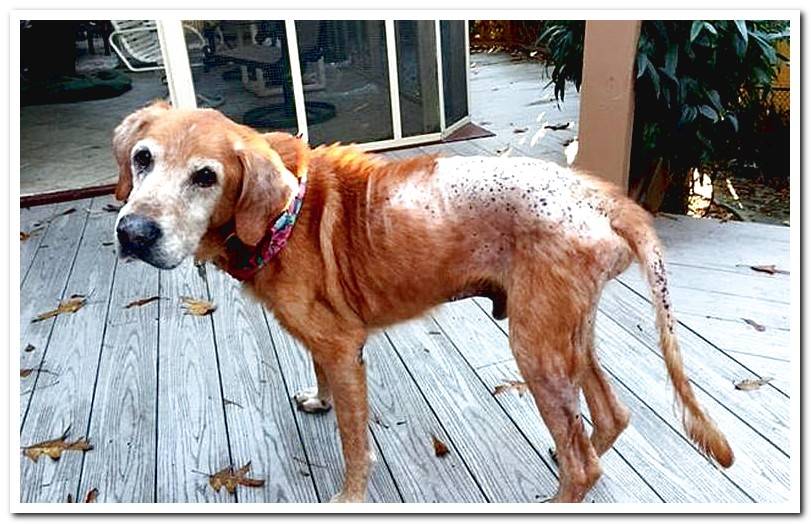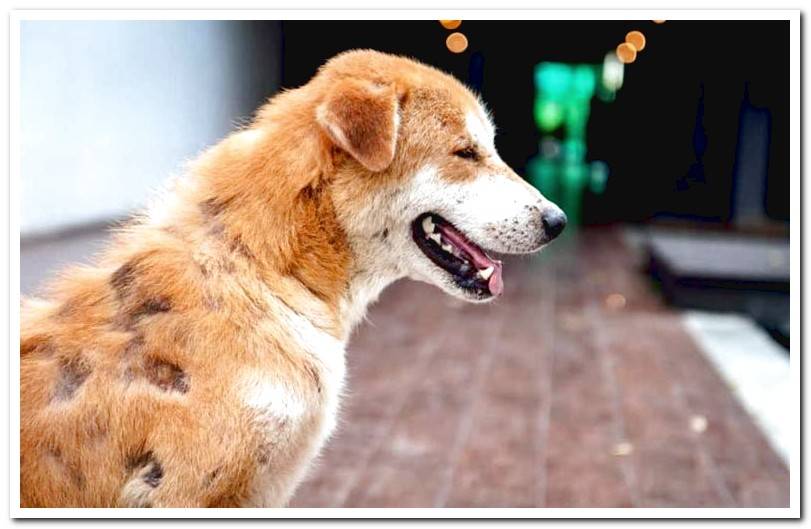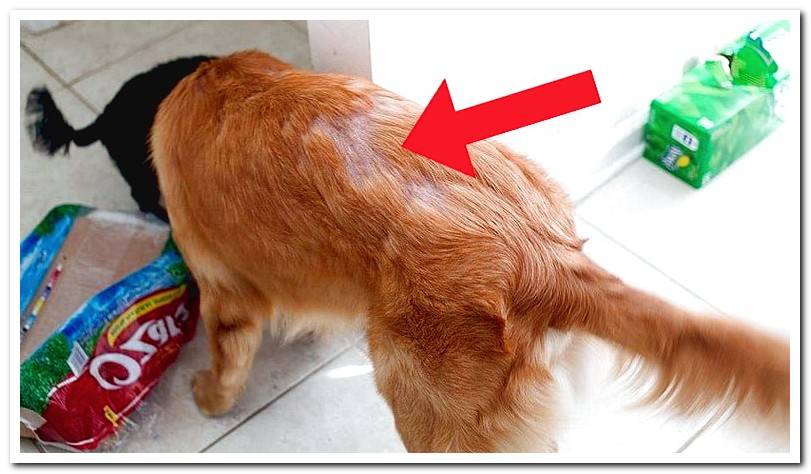
Alopecia refers to lack of hair. Dogs are animals that shed their coats approximately twice a year, so it is easy for them to shed lots of fur during these periods.
This is physiological but if we observe that there are bald areas in your body we can suspect a problem. Alopecia in dogs can be due to multiple causes, both physical and psychological. We should not leave it untreated.
Index of contents
- 1 The cloak of the dogs
- 2 Fleas and hair loss
- 3 Mites, other causes of alopecia
- 4 Allergies also cause bald spots
- 5 Systemic diseases affecting hair
The cloak of the dogs
In dogs we can find multiple coats of different colors, textures and lengths. But they all must have something in common: a healthy, shiny and homogeneous appearance. Hair must be distributed equally throughout the body, without bald areas.
The diet and characteristics of the dog’s life will influence the conditions of its coat. Therefore, it is important that we offer you quality food adapted to your nutritional needs, that we provide hygienic care according to its characteristics and that we provide you with a stress-free life.
An imbalance in any of these aspects can translate into hair in poor condition, scarce, with dandruff or that falls out in abundance, generating areas without hair. We will see below different common causes of alopecia.

Fleas and hair loss
The parasites that are most frequently involved in alopecia in dogs are fleas. These are blood-sucking insects, which means that they feed on the dog’s blood. They get it by biting it, causing itching.
A single sting will not have consequences but if there are many fleas that are feeding on the same dog, the itch will cause it to scratch with its paws or nibble on the same area, especially the lumbosacral, where will eventually lose hair and get hurt they can even become infected.
It is possible that we see fleas or their remains, as a black grit, but, although we cannot detect them, in a dog with alopecia in the lumbosacral area, its presence should always be suspected. Treatment involves deworming the dog and home, treating complications, and establishing a preventive plan.
- Do not miss these tips: How to get rid of fleas at home

Mites, other causes of alopecia
Other parasites capable of causing alopecia in dogs are mites. We will not be able to see them, since they are microscopic, but we will be able to detect them attending to the symptoms that they produce. The vet will confirm their presence by looking at them under a microscope.
Mites are responsible for the appearance of two types of scabies that we can meet relatively frequently. They are as follows:
- Demodectic mange: caused by Demodex canis. It is more frequent in puppies and we will identify it because alopecic areas will appear in different parts of the body. It can be localized or generalized and although it can resolve spontaneously, it requires veterinary control.
- Sarcoptic mange: Sarcoptes scabiei is responsible for this type of scabies, capable of producing very intense itching. The animal will not stop scratching to the point of injury. This scabies is very contagious, also for the human being, since it is a zoonosis. Treatment and control measures are essential.

Allergies also cause bald spots
Itching is a very common symptom of allergies. Even in those that have to do with food, the dog presents dermatological problems rather than digestive ones. Fleas can also trigger an allergy that is known as DAPP and it occurs as a hypersensitivity reaction to the saliva of these parasites.
Itching or itching is the start of alopecia since, as the dog scratches, the hair ends up falling. In the allergies triggered by pollen or plants at first the symptoms will be seasonal, although will eventually extend to any time of the year.
Treatment would consist of avoiding all contact with the allergen, but sometimes it is not even possible to discover, although there is more and more research on it. Currently the veterinaryn can do allergy tests and prescribe vaccines, in addition to hypoallergenic diets, if applicable.
Systemic diseases affecting hair
There are some diseases that have hair loss or alopecia among its symptoms. Some are related to sex hormones, such as hyperestrogenism or hypoestrogenism. Others are due to problems with growth hormone, but are less frequent. The ones that we will find with greater probability are these:
- Hypothyroidism: It is due to a decrease in the production of hormones from the thyroid gland. As far as alopecia is concerned, it is characteristic that bilateral and symmetrical hair loss occurs. It can be diagnosed with a blood test and is usually treated with drugs.
- Cushing’s syndrome or hyperadrenocorticism: It appears after prolonged exposure to glucocorticoids because they have been administered or produced by the body in excess. Hair loss is bilateral and symmetrical. Treatment will depend on the cause that has triggered it.
Other factors such as abuse, fear or stress They can also cause problems in the hair of our dogs.
